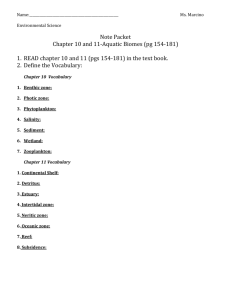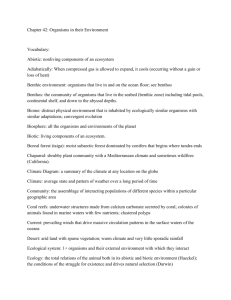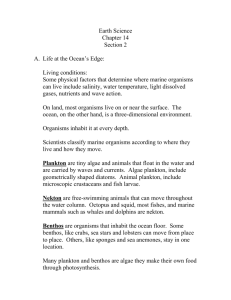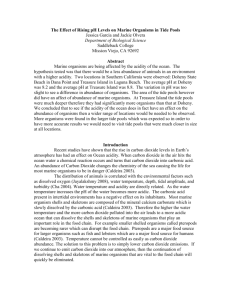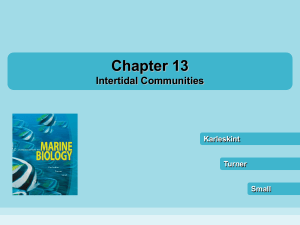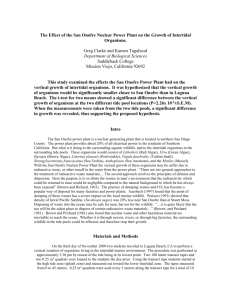zone colder
advertisement
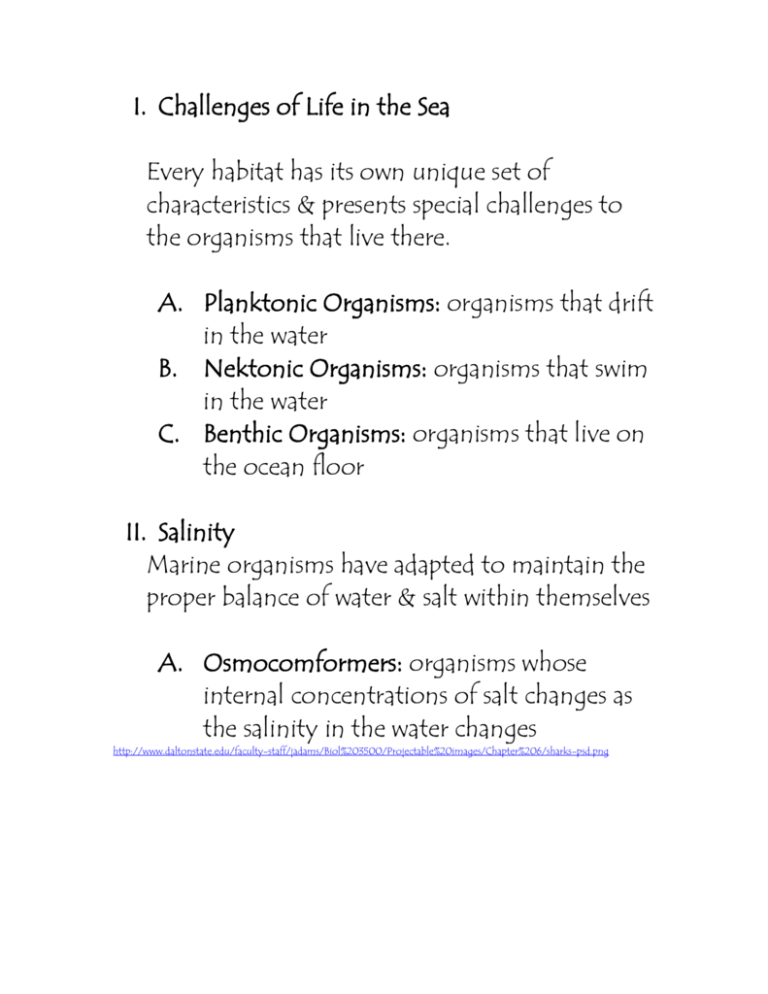
I. Challenges of Life in the Sea Every habitat has its own unique set of characteristics & presents special challenges to the organisms that live there. A. Planktonic Organisms: organisms that drift in the water B. Nektonic Organisms: organisms that swim in the water C. Benthic Organisms: organisms that live on the ocean floor II. Salinity Marine organisms have adapted to maintain the proper balance of water & salt within themselves A. Osmocomformers: organisms whose internal concentrations of salt changes as the salinity in the water changes http://www.daltonstate.edu/faculty-staff/jadams/Biol%203500/Projectable%20images/Chapter%206/sharks-psd.png III. Temperature Metabolic reactions proceed faster at higher environmental temperatures & slow down dramatically as it gets colder A. Ectotherms: (poikilotherms) - cold blooded organisms - as temperatures in the water fluctuate so does their body temp. - become sluggish in unusually cold water B. Endotherms: (homeotherms) - warm blooded organisms - use respiration to maintain heat - MAMMALS – blubber reduces heat loss Marine Life Zones A life zone is a region that contains characteristic organisms that interact with one another and with their environment A. Supratidal – from the high tide mark to the sand dunes behind the beach 1. Sand very dry 2. Movement of sand in this location is due primarily to the winds B. Intertidal Zone – exposed to the atmosphere during low tide and covered by water during high tide 1. Absorbs the direct assault of waves striking the beach 2. Breaking waves release their energy here 3. Broken shells litter this area Strand Line – marks the highest point where water washes up on the beach and separates upper beach from the intertidal zone C. Subtidal Zone – the coastal life zone that remains underwater 1. beneath the lowest low tide and is continuously covered by offshore water 2. extends as far out as the sand is moved by wave action D. Pelagic Zone – the largest life zone in the ocean 1. covers the entire ocean of water above the sea bottom 2. this is the area where large schools of fish and pods of marine mammals swim freely 3. includes the Neritic Zone (0 – 200meters out to sea past the intertidal zone) and the Oceanic Zone (200 meters +) E. Neritic Zone – region that lies above the continental shelf 1. most of the world’s commercial fishing occurs in this zone 2. much of this zone is sunlit F. Oceanic Zone – this region is beyond the neritic zone and includes most of the open ocean 1. the upper portion of this zone is called the photic (meaning “light”) zone; most light penetrates up to 200m 2. the lower portion is called the aphotic (meaning “no light”) zone the deepest part of the ocean floor is the ocean basin or abyssal plain Benthic Zone – includes the entire sea floor, from the shallow intertidal zone to the deep ocean basin





